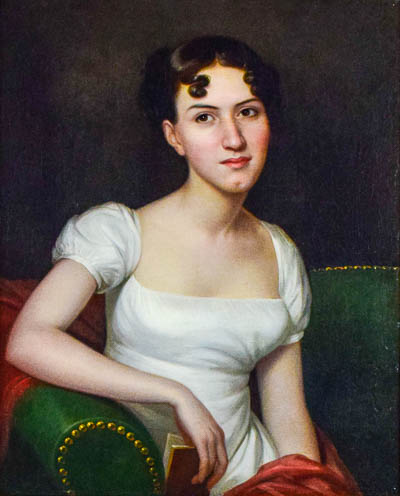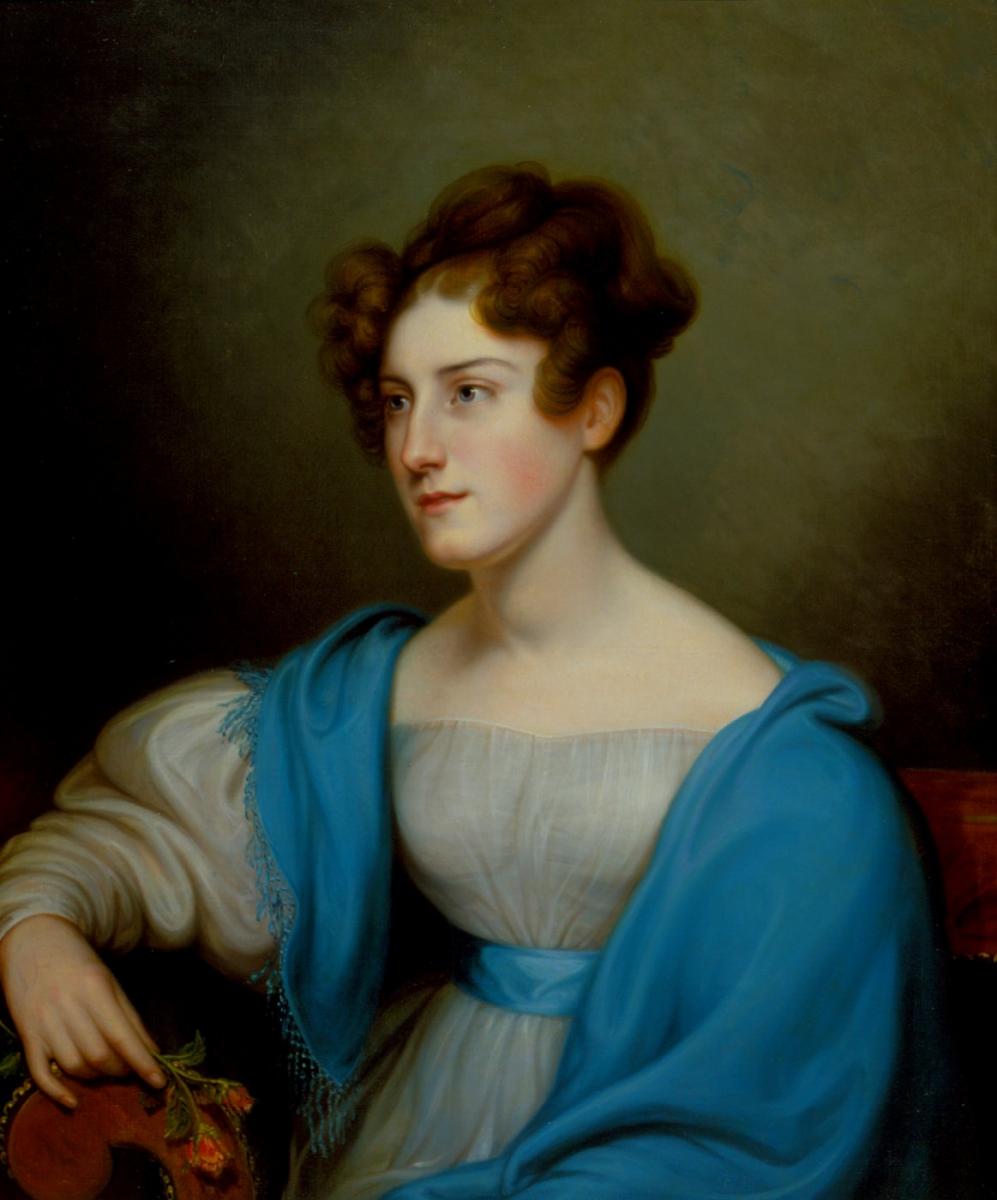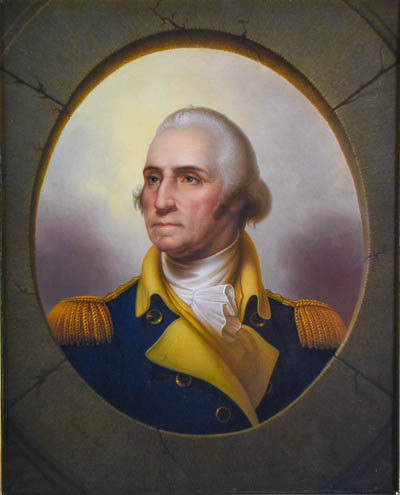Here at Hagley, we hold over 200 paintings in our collection. They range from portraits of du Pont family members to the original advertising artwork of the DuPont Company.
Earlier this month, we created a small display of Rembrandt Peale paintings in a small room on the second floor of the Eleutherian Mills Residence. While this display was for a private audience, we hope to share a similar presentation with the public very soon. Until then, let me share with you some details about Peale and his paintings in our collection.
Peale’s work is represented in Hagley’s collection through six portrait paintings (Pierre Samuel du Pont de Nemours, Margaretta Lammot du Pont, Sophie du Pont, Evelina du Pont, George Washington, and Martha Washington) and two attributed sketches (E. I. du Pont and Victor Marie du Pont).
Rembrandt Peale (1778-1860) was an American portrait painter most well-known for his portraits of George Washington. On February 22, 1778, he was born in Bucks County, Pennsylvania, to his mother, Rachel Brewer, and his father, Charles Wilson Peale. Charles was a noted artist, and he taught his children to paint scenery and portraiture from a very early age. Rembrandt’s siblings were also named after revered artists of the past: Rubens, Titian Ramsay, Raphaelle, Sophonisba Angusciola, and Angelica Kauffman.
Rembrandt was thirteen years old when he completed his first work, a self-portrait. He would go on to produce more than one thousand works in his lifetime. Philadelphia was Rembrandt’s hometown, but he traveled up and down the east coast from Boston to Charleston. Rembrandt also spent extended periods abroad.

2020.7
Evelina and her sister Victorine du Pont Bauduy had their portraits painted by Rembrandt Peale in 1813. Victorine’s portrait and Eleuthera du Pont’s (done in 1831) reside in the Winterthur Museum Collections.

91.29.2
In 1831, Sophie Madeleine du Pont and her sister Eleuthera had their portraits painted by Rembrandt Peale in Philadelphia. In correspondence with their older sister Victorine (who had her portrait done in 1813), the girls mention that Peale was a slow worker. This portrait of Sophie is said to have taken three weeks to complete.
His father’s artistic renown made it possible for Rembrandt to paint the portraits of many important figures. In 1795, George Washington agreed to three sittings over three days for Rembrandt to paint his portrait. At only seventeen years of age, Rembrandt painted a wonderfully accurate depiction of the then sixty-three-year-old George Washington.
In the following years, Rembrandt was determined to produce a more idealized portrait of the President, one that captured the heroic and confident qualities held in the minds of many Americans. In 1823, Rembrandt succeeded in his goal with a portrait of George Washington entitled Patriae Pater. He would eventually create close to eighty copies of that work.

2021.3.1
Rembrandt Peale made numerous copies of his 1824 work, Patriae Pater. The sale of these “porthole” portraits – referencing the stone casement surrounding the portraits – produced income for Peale. They also served as a reminder of the success of Patriae Pater. The original 1824 painting was sold to Congress in 1832, and today it resides in the Senate Collection.
Caroline Western is the Museum’s Curator of Collections at Hagley Museum and Library.
